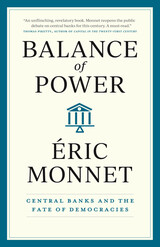183 scholarly books by Assoc of College & Research Libraries and 11
start with T
183 scholarly books by Assoc of College & Research Libraries and 11
183 scholarly books by Assoc of College & Research Libraries
11 start with T start with T
11 start with T start with T
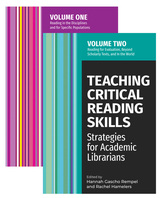
Teaching Critical Reading Skills
Strategies for Academic Librarians Set: 2-Volume Set
Hannah Gascho Rempel
Assoc of College & Research Libraries, 2023
Teaching Critical Reading Skills: Strategies for Academic Librarians collects the experiences and approaches of librarians who teach reading. In two volumes, librarians share their role in teaching reading—using pedagogical theories and techniques in new and interesting ways, making implicit reading knowledge, skills, and techniques explicit to students, presenting reading as a communal activity, partnering with other campus stakeholders, and leading campus conversations about critical reading. These volumes provide ready-made activities you can add or adapt to your teaching practice. The five sections are arranged by theme:
Volume 1
Volume 2
Each of the 45 chapters contains teaching and programmatic strategies, resources, and lesson plans, as well as a section titled “Critical Reading Connection” that highlights each author’s approach for engaging with the purpose of reading critically and advancing the conversation about how librarians can foster this skill.
Academic librarians and archivists have a long history of engaging with different types of literacy and acting as a bridge between faculty and students. We understand the different reading needs of specific student populations and the affective challenges with reading that are often shared across learner audiences. We know what types of sources are read, the histories—and needed changes—of how authority has been granted in various fields, how students may be expected to apply what they read in future professional or civic settings, and frequently look beyond our local institutions to think about the larger structural and social justice implications of what is read, how we read, and who does the reading.
These volumes can help you make the implicit explicit for learners and teach that reading is both a skill that must be practiced and nurtured and a communal act. Teaching Critical Reading Skills demonstrates librarians’ and archivists’ deep connections to our campus communities and how critical reading instruction can be integrated in a variety of contexts within those communities.
Volume 1
- Part I: Reading in the Disciplines
- Part II: Reading for Specific Populations
Volume 2
- Part III: Reading Beyond Scholarly Texts
- Part IV: Reading to Evaluate
- Part V: Reading in the World
Each of the 45 chapters contains teaching and programmatic strategies, resources, and lesson plans, as well as a section titled “Critical Reading Connection” that highlights each author’s approach for engaging with the purpose of reading critically and advancing the conversation about how librarians can foster this skill.
Academic librarians and archivists have a long history of engaging with different types of literacy and acting as a bridge between faculty and students. We understand the different reading needs of specific student populations and the affective challenges with reading that are often shared across learner audiences. We know what types of sources are read, the histories—and needed changes—of how authority has been granted in various fields, how students may be expected to apply what they read in future professional or civic settings, and frequently look beyond our local institutions to think about the larger structural and social justice implications of what is read, how we read, and who does the reading.
These volumes can help you make the implicit explicit for learners and teach that reading is both a skill that must be practiced and nurtured and a communal act. Teaching Critical Reading Skills demonstrates librarians’ and archivists’ deep connections to our campus communities and how critical reading instruction can be integrated in a variety of contexts within those communities.
[more]
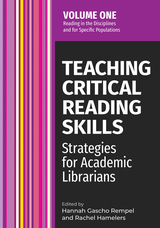
Teaching Critical Reading Skills v1
Strategies for Academic Librarians Volume 1
Hannah Gascho Rempel
Assoc of College & Research Libraries, 2023
Teaching Critical Reading Skills: Strategies for Academic Librarians collects the experiences and approaches of librarians who teach reading. In two volumes, librarians share their role in teaching reading—using pedagogical theories and techniques in new and interesting ways, making implicit reading knowledge, skills, and techniques explicit to students, presenting reading as a communal activity, partnering with other campus stakeholders, and leading campus conversations about critical reading. These volumes provide ready-made activities you can add or adapt to your teaching practice. The five sections are arranged by theme:
Volume 1
Volume 2
Each of the 45 chapters contains teaching and programmatic strategies, resources, and lesson plans, as well as a section titled “Critical Reading Connection” that highlights each author’s approach for engaging with the purpose of reading critically and advancing the conversation about how librarians can foster this skill.
Academic librarians and archivists have a long history of engaging with different types of literacy and acting as a bridge between faculty and students. We understand the different reading needs of specific student populations and the affective challenges with reading that are often shared across learner audiences. We know what types of sources are read, the histories—and needed changes—of how authority has been granted in various fields, how students may be expected to apply what they read in future professional or civic settings, and frequently look beyond our local institutions to think about the larger structural and social justice implications of what is read, how we read, and who does the reading.
These volumes can help you make the implicit explicit for learners and teach that reading is both a skill that must be practiced and nurtured and a communal act. Teaching Critical Reading Skills demonstrates librarians’ and archivists’ deep connections to our campus communities and how critical reading instruction can be integrated in a variety of contexts within those communities.
Volume 1
- Part I: Reading in the Disciplines
- Part II: Reading for Specific Populations
Volume 2
- Part III: Reading Beyond Scholarly Texts
- Part IV: Reading to Evaluate
- Part V: Reading in the World
Each of the 45 chapters contains teaching and programmatic strategies, resources, and lesson plans, as well as a section titled “Critical Reading Connection” that highlights each author’s approach for engaging with the purpose of reading critically and advancing the conversation about how librarians can foster this skill.
Academic librarians and archivists have a long history of engaging with different types of literacy and acting as a bridge between faculty and students. We understand the different reading needs of specific student populations and the affective challenges with reading that are often shared across learner audiences. We know what types of sources are read, the histories—and needed changes—of how authority has been granted in various fields, how students may be expected to apply what they read in future professional or civic settings, and frequently look beyond our local institutions to think about the larger structural and social justice implications of what is read, how we read, and who does the reading.
These volumes can help you make the implicit explicit for learners and teach that reading is both a skill that must be practiced and nurtured and a communal act. Teaching Critical Reading Skills demonstrates librarians’ and archivists’ deep connections to our campus communities and how critical reading instruction can be integrated in a variety of contexts within those communities.
[more]
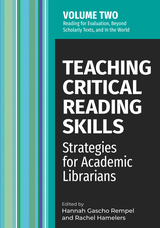
Teaching Critical Reading Skills v2
Strategies for Academic Librarians Volume 2
Hannah Gascho Rempel
Assoc of College & Research Libraries, 2023
Teaching Critical Reading Skills: Strategies for Academic Librarians collects the experiences and approaches of librarians who teach reading. In two volumes, librarians share their role in teaching reading—using pedagogical theories and techniques in new and interesting ways, making implicit reading knowledge, skills, and techniques explicit to students, presenting reading as a communal activity, partnering with other campus stakeholders, and leading campus conversations about critical reading. These volumes provide ready-made activities you can add or adapt to your teaching practice. The five sections are arranged by theme:
Volume 1
Volume 2
Each of the 45 chapters contains teaching and programmatic strategies, resources, and lesson plans, as well as a section titled “Critical Reading Connection” that highlights each author’s approach for engaging with the purpose of reading critically and advancing the conversation about how librarians can foster this skill.
Academic librarians and archivists have a long history of engaging with different types of literacy and acting as a bridge between faculty and students. We understand the different reading needs of specific student populations and the affective challenges with reading that are often shared across learner audiences. We know what types of sources are read, the histories—and needed changes—of how authority has been granted in various fields, how students may be expected to apply what they read in future professional or civic settings, and frequently look beyond our local institutions to think about the larger structural and social justice implications of what is read, how we read, and who does the reading.
These volumes can help you make the implicit explicit for learners and teach that reading is both a skill that must be practiced and nurtured and a communal act. Teaching Critical Reading Skills demonstrates librarians’ and archivists’ deep connections to our campus communities and how critical reading instruction can be integrated in a variety of contexts within those communities.
Volume 1
- Part I: Reading in the Disciplines
- Part II: Reading for Specific Populations
Volume 2
- Part III: Reading Beyond Scholarly Texts
- Part IV: Reading to Evaluate
- Part V: Reading in the World
Each of the 45 chapters contains teaching and programmatic strategies, resources, and lesson plans, as well as a section titled “Critical Reading Connection” that highlights each author’s approach for engaging with the purpose of reading critically and advancing the conversation about how librarians can foster this skill.
Academic librarians and archivists have a long history of engaging with different types of literacy and acting as a bridge between faculty and students. We understand the different reading needs of specific student populations and the affective challenges with reading that are often shared across learner audiences. We know what types of sources are read, the histories—and needed changes—of how authority has been granted in various fields, how students may be expected to apply what they read in future professional or civic settings, and frequently look beyond our local institutions to think about the larger structural and social justice implications of what is read, how we read, and who does the reading.
These volumes can help you make the implicit explicit for learners and teach that reading is both a skill that must be practiced and nurtured and a communal act. Teaching Critical Reading Skills demonstrates librarians’ and archivists’ deep connections to our campus communities and how critical reading instruction can be integrated in a variety of contexts within those communities.
[more]

Teaching Information Literacy Threshold Concepts
Lesson
Patricia Bravender
Assoc of College & Research Libraries, 2015

Teaching Information Literacy Threshold Concepts
Lesson Plans for Librarians
Patricia Bravender
Assoc of College & Research Libraries, 2015

The Teaching with Primary Sources Cookbook
Julie M. Porterfield
Assoc of College & Research Libraries, 2021
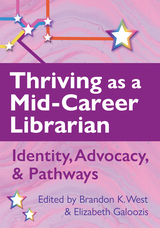
Thriving as a Mid-Career Librarian
Identity, Advocacy, and Pathways
Brandon West
Assoc of College & Research Libraries, 2023
Mid-career librarianship looks different for everyone. Maybe you’ve worked in libraries for ten years, or you’re halfway to retirement. Maybe you’ve reached the highest level of a hierarchy you care to reach. Most of the literature about mid-career librarianship tends to focus on advancing to leadership or administration, but many of us are more concerned with how to continue to grow professionally without moving upward; how to make decisions about staying in an institution (or the profession); sustaining yourself amid burnout, constant change, wage compression, or even boredom; and navigating cultures of white supremacy, patriarchy, and hierarchy.
In four sections, Thriving as a Mid-Career Librarian collects the experiences of mid-career librarians as they grapple with these questions and the roles that marginalized perspectives, intersectionality, and privilege have played in their careers:
It can feel like everything gets harder, more political, and further under-resourced with each passing year. Thriving as a Mid-Career Librarian offers strategies of community, support, and advocacy that can help make it possible for us to thrive and help others to thrive. At mid-career, we may not have the same bright-eyed enthusiasm we possessed as new information professionals, but we have other things: the contributions we make to our communities and the wealth of experience we have built up since those days.
In four sections, Thriving as a Mid-Career Librarian collects the experiences of mid-career librarians as they grapple with these questions and the roles that marginalized perspectives, intersectionality, and privilege have played in their careers:
- Section 1: Staying Engaged in Your Career
- Section 2: The Role of Identity in Shaping Mid-career Librarianship
- Section 3: Being Your Own Advocate
- Section 4: To Lead or Not to Lead?
It can feel like everything gets harder, more political, and further under-resourced with each passing year. Thriving as a Mid-Career Librarian offers strategies of community, support, and advocacy that can help make it possible for us to thrive and help others to thrive. At mid-career, we may not have the same bright-eyed enthusiasm we possessed as new information professionals, but we have other things: the contributions we make to our communities and the wealth of experience we have built up since those days.
[more]

Toxic Dynamics
Disrupting, Dismantling, and Transforming Academic Library Culture
Russell Michalak
Assoc of College & Research Libraries, 2024
Academic libraries are full of inspiring collections, resources, and services, but libraries are special because of the people who run them. And what people believe about and face in their culture impacts ideas, plans, and outcomes. Academic library workers face many contemporary challenges that contribute to toxic work cultures—the rapid change of higher education, diminishing resources, lack of diversity, power hierarchies—and addressing these problems requires innovative solutions, ongoing professional development, and effective leadership.
Toxic Dynamics: Disrupting, Dismantling, and Transforming Academic Library Culture provides practical solutions for confronting these complex issues and innovative ways to promote a healthy and sustainable work culture. It addresses critical and timely challenges such as faculty versus staff or us versus them mentality, unionization, gendered labor, organizational change, self-care, tenure, and promotion. Authors from all sizes and types of academic libraries provide evidence-based solutions to mitigate the negative effects of toxicity, change management strategies, and ways to confront and challenge values that harm library workers and their well-being.
By understanding the root causes of toxic cultures, recognizing their impact, and implementing solutions, leaders can create a more supportive and positive work environment and improve morale, retention, and productivity. Toxic Dynamics is an important resource for anyone interested in improving workplace culture and addressing issues related to toxicity and inequity, and for library leaders at all levels.
Toxic Dynamics: Disrupting, Dismantling, and Transforming Academic Library Culture provides practical solutions for confronting these complex issues and innovative ways to promote a healthy and sustainable work culture. It addresses critical and timely challenges such as faculty versus staff or us versus them mentality, unionization, gendered labor, organizational change, self-care, tenure, and promotion. Authors from all sizes and types of academic libraries provide evidence-based solutions to mitigate the negative effects of toxicity, change management strategies, and ways to confront and challenge values that harm library workers and their well-being.
By understanding the root causes of toxic cultures, recognizing their impact, and implementing solutions, leaders can create a more supportive and positive work environment and improve morale, retention, and productivity. Toxic Dynamics is an important resource for anyone interested in improving workplace culture and addressing issues related to toxicity and inequity, and for library leaders at all levels.
[more]

Training Research Consultants
Jennifer Torreano
Assoc of College & Research Libraries, 2021

Transforming Libraries To Serve Graduate Students
Crystal Renfro
Assoc of College & Research Libraries, 2018
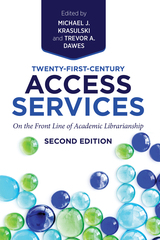
Twenty-First-Century Access Services
On the Front Line of Academic Librarianship, Second Edition
Trevor A. Dawes
Assoc of College & Research Libraries, 2023
Access services is the administrative umbrella typically found in academic libraries where the circulation, reserves, interlibrary loan, stacks maintenance, and related functions reside. These functions are central to daily operations and the staff are often seen as “the face” of the library. But while access services impact every user of the academic library, these functions can be unseen and often go unnoticed and uncelebrated.
This thoroughly revised edition of 2013’s seminal Twenty-First-Century Access Services highlights the expanded duties of these departments; the roles these services continue to play in the success of the library, students, and faculty; and the knowledge, skills, and abilities these library workers need. In four parts it explores:
Twenty-First-Century Access Services demonstrates access services’ value, defines their responsibilities and necessary skills, and explores how access services departments are evolving new and traditional services to support the academic mission of their institutions. It is geared toward both access services practitioners and library and information science graduate students and faculty.
This thoroughly revised edition of 2013’s seminal Twenty-First-Century Access Services highlights the expanded duties of these departments; the roles these services continue to play in the success of the library, students, and faculty; and the knowledge, skills, and abilities these library workers need. In four parts it explores:
- Facilitating Access
- Leading Access Services
- Assessing Access Services
- Developing Access Services Professionals
Twenty-First-Century Access Services demonstrates access services’ value, defines their responsibilities and necessary skills, and explores how access services departments are evolving new and traditional services to support the academic mission of their institutions. It is geared toward both access services practitioners and library and information science graduate students and faculty.
[more]
READERS
Browse our collection.
PUBLISHERS
See BiblioVault's publisher services.
STUDENT SERVICES
Files for college accessibility offices.
UChicago Accessibility Resources
home | accessibility | search | about | contact us
BiblioVault ® 2001 - 2024
The University of Chicago Press





